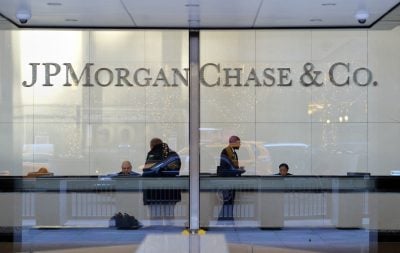As they struggle to secure investment to aid post-Covid recovery, African governments are facing the spectre of a debt crisis that threatens to become as big as that of the 1980s.
This crisis can only be resolved with a more stable and liquid market in African government bonds, argue Daniel Cohen, the chair of Finance for Development Lab (FDL), and Ibrahim Elbadawi, the managing director of the Economic Research Forum, in a recent in a recent policy brief.
The authors propose that such a market can be achieved by combining specific tools under a regional African financial arrangement that would be known as the African Stability and Liquidity Mechanism (ASLM).
Unprecedented challenges
The world currently faces the biggest set of economic challenges since the 2007-08 financial crisis.
Global supply chains continue to experience severe dislocation as a result of the Covid-19 pandemic and associated lockdown restrictions. This created inflationary pressures even prior to the Russian invasion of Ukraine, but the war has restricted the supply of basic foodstuffs, including wheat and vegetable oil from Black Sea exporters, driving up food prices in the process. At the same time, international efforts to deter Russian aggression, coupled with Moscow’s response to them, has led to a spike in oil and gas prices.
This is making it more difficult for African governments to secure investment in post-pandemic recovery, in much needed infrastructure, and in climate change mitigation as part of sustainable development. Beijing had been a key source of finance for infrastructural projects but the Chinese government had severely slashed funding for such investment streams in the years running up to the pandemic.
Partly because of plentiful Chinese lending – much of it for badly needed projects – the sovereign debt of many African governments has built up in recent years, but they now face much higher servicing costs and greater difficulty in securing new lending.
The African Stability and Liquidity Mechanism – a new safey net
As ever, instability has seen investors curtail their exposure to frontier markets, including those in Africa, even where those markets have nothing to do with the direct causes of that instability. Potential lenders have also been put off by rising African debt levels, although the picture varies a great deal across the continent.
Sovereign debt levels are unsustainably high in some countries but even countries with strong fundamentals are suffering from a liquidity shock that current financial arrangements are unable to manage.
Cohen and Elbadawi argue that an ASLM would provide a financial safety net to help ensure macro-financial stability and reasonable funding costs for African governments by providing a stability mechanism rather than a bail-out facility.
Hosted by the African Development Bank (AfDB), it could leverage renewed enthusiasm for multilateralism and G20 countries’ commitments to rechannel their special drawing rights (SDRs) issued by the IMF. It would also provide financial support without the stigma that can come with being placed on an IMF programme.
- Read our exclusive interview with Daniel Cohen and Ibrahim Elbadawi – Why Africa needs a stability and liquidity mechanism.
Four facilities to boost stability
The ALSM would comprise four facilities to boost local financial market stability, militate against commodity price fluctuations and inject more liquidity into the African sovereign debt market, thereby reducing financing costs: the Liquidity and Sustainability Facility (LSF); a commodity hedging facility; a credit enhancement facility; and a debt restructuring facilitation facility.
- The LSF has already been launched. It was set up in November 2021 by the UN Economic Commission for Africa to compress liquidity premiums and improve sovereign access to international bond markets for African countries through a repo market for the region on a par with international standards. It is designed to save an estimated $11bn in borrowing costs over the first five years of its operation. The repo market would provide short term loans in exchange for sovereign debt collateral.
- A new commodity hedging facility would guarantee margin calls, which are triggered when prices rise, to protect against fluctuations in global commodity prices. This would provide critical protection to both importing and exporting countries, indirectly stabilising the value of their debt.
- The credit enhancement facility would offer partial guarantees on new debt issued to create a backstop against potential panic risks, creating a virtuous circle on the quality of the debt.
- Finally, the debt restructuring facilitation facility would support debt restructuring negotiations by providing cash sweeteners to marginal creditors when debt restructuring is required. This would reduce both the length and expense of restructuring negotiations. The facility would require a capital base provided by African countries themselves, complemented by donor resources, possibly including a reallocation of SDRs. The authors estimate that about $40bn-80bn billion of callable capital would be sufficient to make it sustainable.
These facilities and the ALSM itself “should not bail out countries in unsustainable macrofinancial situations or act as a substitute for a program with the International Monetary Fund. Instead, the ALSM should focus on African specific financial vulnerabilities that are not yet within the toolkits of international financial institutions,” say Cohen and Elbadawi.
“While not aiming at solving problems of over-indebtedness, it can provide important services in
improving management of liquidity and financial stability.”
The Liquidity and Stability Facility – a “repo” market for Africa
A couple of years ago the amount of African eurobonds in circulation exceeded the symbolic $100bn mark. Today it is in the region of $150bn with over 20 African sovereigns having accessed international debt capital markets over the last decade. These issuances were often over-subscribed with investors seeking higher yields.
However appealing they may have seemed, African eurobonds face a disadvantage in that they are less liquid than other similar financial products. It is well known that African issuances historically suffered a risk premium, meaning issuers paid a higher interest rate than their peers with a similar risk profile.
This is what former executive secretary of the UN Economic Commission for Africa Vera Songwe was trying to rectify when she called for the launch of a “repo” (repurchase) market for African bonds, where these bonds could be used by private investors as collateral for short term loans. To put things into perspective, the US repo market provides more than $3 trillion in funding every day.
This led to the setting up of the LSF. The LSF is already a registered entity, it benefits from the expertise of leading financial institutions such as Bank of New York Mellon, the biggest player in global repo markets, and Citi.
So what can we expect? According to Songwe, African paper should become more attractive, thus reducing yields and the cost of servicing the debt. It should also bring a wider range of investors to the African Eurobonds market once they know that they will be able to access short terms loans in exchange for their holding of African sovereign debt, and not be tied down once investing in African paper.
The plan is to initially start with a small sub-section of the current international sovereign bonds issued. Songwe, who chairs the board of the LSF, has estimated that once functional the deepening of the African Eurobonds repo markets can bring savings of around $11bn in debt servicing over the next five years.
Want to continue reading? Subscribe today.
You've read all your free articles for this month! Subscribe now to enjoy full access to our content.
Digital Monthly
£8.00 / month
Receive full unlimited access to our articles, opinions, podcasts and more.
Digital Yearly
£70.00 / year
Our best value offer - save £26 and gain access to all of our digital content for an entire year!
 Sign in with Google
Sign in with Google 



